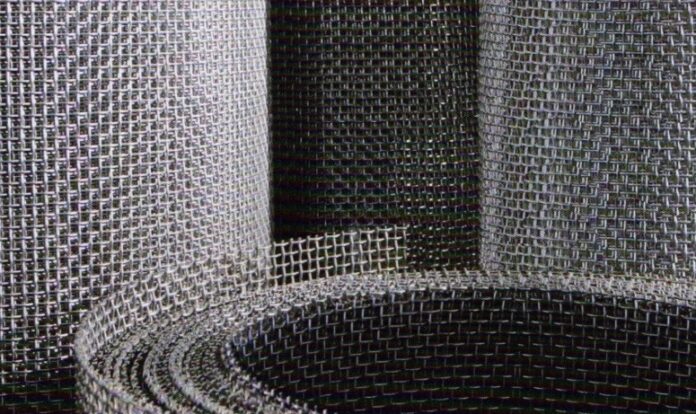When working on a project that requires durability, precision, and reliability, selecting the right materials is essential. One such important material is custom woven wire mesh. This product offers versatility and strength for many applications, from construction and industrial use to agriculture and filtration. However, choosing the right custom woven wire mesh can be challenging if you are not familiar with the options available. This article will guide you through the key factors to consider to ensure you get the best mesh for your specific project needs.
Understanding Custom Woven Wire Mesh
Custom woven wire mesh is a type of metal fabric made by weaving wires together in various patterns and sizes. Unlike standard wire mesh, custom woven wire mesh is tailored to meet unique specifications based on the project requirements. This means the mesh can vary in wire diameter, weave pattern, material type, and overall size.
The ability to customize allows the mesh to serve different purposes, such as filtering particles, providing security, or reinforcing structures. Before purchasing, it’s important to understand what features of the mesh will work best for your intended use.
Consider the Material Type
The material of the wire mesh plays a vital role in its performance. Common materials include stainless steel, galvanized steel, aluminum, and brass. Stainless steel is highly popular because of its strength and resistance to rust and corrosion, making it suitable for outdoor or wet environments. Galvanized steel is coated with zinc for added protection and is usually less expensive but may not last as long in harsh conditions.
Aluminum is lightweight and resistant to corrosion but not as strong as steel. Brass offers decorative appeal and some corrosion resistance but is generally used in specialty applications. When choosing your custom woven wire mesh, consider the environment it will be used in and whether factors like moisture, temperature, and exposure to chemicals will affect the material.
Select the Right Wire Diameter and Mesh Size
Two important dimensions in custom Woven Wire mesh are wire diameter and mesh size. Wire diameter refers to the thickness of the individual wire strands. Thicker wires provide greater strength and durability but may reduce flexibility and increase weight. Thinner wires offer more flexibility and finer filtering but might not withstand heavy loads.
Mesh size, often described in terms of openings per inch or the size of the openings between wires, determines what can pass through the mesh. A mesh with small openings is suitable for filtering fine particles, while larger openings may be better for protection or ventilation purposes.
Balancing wire diameter and mesh size is essential to meet both strength and functional requirements of your project.
Choose the Weave Pattern
The weave pattern of the wire mesh affects its strength, flexibility, and appearance. The most common weave types are plain weave, twill weave, and Dutch weave.
Plain weave is the simplest pattern where wires alternate over and under each other. It provides good strength and is widely used in general applications. Twill weave has a diagonal pattern that offers increased flexibility and a smoother surface. This type is often used in filtration.
Dutch weave features wires that are closer together in one direction than the other, creating a tighter mesh that can filter smaller particles. Understanding the weave type needed depends on how you want the mesh to perform and look.
Assess the Project’s Specific Requirements
Each project has unique demands, so it’s important to clearly define your needs before choosing a custom woven wire mesh. Think about the purpose of the mesh in your project. Is it for security fencing, industrial filtration, decorative panels, or screening? Also consider the load the mesh must bear and the environment it will face.
If the mesh will be exposed to outdoor conditions, corrosion resistance becomes critical. For filtering applications, precision in mesh size and weave pattern is necessary to achieve the desired filtration level. For construction or reinforcement, strength and durability are the main concerns.
Discussing these details with your supplier or manufacturer will help ensure the mesh is made to your exact specifications.
Consider Customization Options
One of the biggest advantages of custom woven wire mesh is the ability to tailor it to your project. Besides selecting material, wire diameter, mesh size, and weave pattern, you can also specify sheet size, edge finishing, and treatments like coating or annealing.
For example, if you need mesh panels of a certain size or shape, custom cutting can save time and reduce waste. Surface treatments can improve longevity and resistance to environmental damage.
Custom options allow you to optimize the mesh to perform exactly as you need, so don’t hesitate to explore these possibilities.
Work with Experienced Suppliers
Choosing a reliable and experienced supplier is crucial when purchasing custom woven wire mesh. A good supplier can guide you through the options, answer technical questions, and help you select the right mesh based on your project’s requirements.
They can also provide quality assurance, certifications, and timely delivery. Researching and selecting a supplier with a strong reputation and proven expertise will help ensure your project runs smoothly.
Conclusion
Choosing the right custom woven wire mesh for your project involves careful consideration of material type, wire diameter, mesh size, weave pattern, and project-specific needs. By understanding these factors and working closely with a trusted supplier, you can select a mesh that offers durability, functionality, and value.
Investing time in selecting the right custom woven wire mesh ensures your project’s success and long-term performance. Whether your needs are for filtration, security, or structural support, the right mesh can make all the difference.

